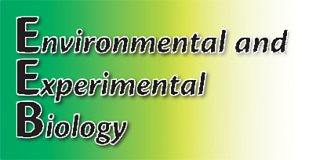
On-line: ISSN 2255–9582

| Faculty of Biology, University of Latvia | ||||||

|
Hard copy: ISSN 1691–8088
On-line: ISSN 2255–9582 Env Exp Biol (2013) 11: 185–188
|
|||||

|
About the Journal | Retractions | Open Access | Author Guidlines | Current Issue | Archive |
|
Environmental and Experimental Biology |
Env Exp Biol (2013) 11: 185–188 |
So far only a few studies have been conducted on the cuticular lipids of honey bees. Eggs and some body parts have been previously used in some chemical studies for certain purposes (e.g. the identification of egg marking pheromones and for investigating the role of hydrocarbons in nestmate recognition). In the present study, cuticular lipids of body parts (head, thorax and abdomen) were analyzed qualitatively by gas chromatography/mass spectrometry to identify the pattern of cuticular lipids on these parts for two main honey bee castes (workers and queens) and for two subspecies. The obtained results showed that the abdomen had the highest number of lipids in general and relatively minor differences between head and thorax lipids were found. Each subspecies had a specific lipid profile. Thus, the cuticular lipids could aid in the discrimination between honey bee subspecies. The conundrum behind the differences between body parts in lipid profiles may be related to the specific functions of each body part, and to role of lipids in protecting the body from desiccation.